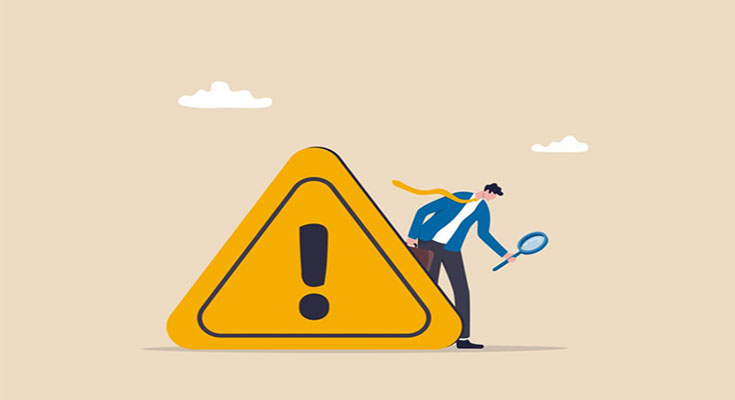Hospitals are where we go for health and healing but ironically, they record an alarmingly high number of accidents every year. Many institutions have put in place mitigating measures but, time and again, they have proven inadequate.
Because nurses are on the front lines, they have a big part to play in risk assessment and mitigation. If you are interested in becoming part of the risk assessment and management team in a hospital, you should investigate acute care nurse practitioner programs, which can be studied online at an accredited university such as Rockhurst. One of the modules covered is evidence-informed quality improvement. It teaches how to use research and data to ensure patient safety.
The course also teaches advanced nursing practice, leadership, systems, and policy. All course material is presented online, and you can take classes wherever you are so long as you have an internet connection. Students who enroll in accredited institutions get clinical placement services that provide real-world experience. You can find out more about acute care nurse practitioner online programs here.
Understandably, some people are reluctant to pursue degrees online. So long as you get yours from an accredited institution, it is valid and will be recognized by employers. However, take some time to learn more about online degrees before you enroll.
Before you start your course, it would be worthwhile to familiarize yourself with aspects of risk assessment; it makes it easier to contextualize the theory you learn in class. This article looks at what evidence-based risk assessment is, the different types, as well as examples.
What is evidence-based risk assessment?
It is best defined as the use of current evidence to make decisions about mitigating and managing risk in healthcare delivery. The end goal is to improve patient safety in the clinical setting by providing practitioners with the tools they need to implement successful risk mitigation strategies.
For medical institutions, the biggest concern is insurance premiums. The more accidents associated with a particular hospital, clinic, or nursing home, the higher the premium costs will be.
Insurance companies, to ensure that they can pay out hefty claims filed by clients who suffer accidents, charge exorbitant premiums.
Hospitals, nursing homes, and other clinical facilities with a high rate of accidents pay more in premiums, and that has a direct impact on their bottom line.
As a nurse manager, one of your roles will be to identify risk, determine why it is happening and reduce it. It is also your job to ensure that nurses within your purview understand and implement the protocols that are in place for risk mitigation.
You may be tasked with designing a risk management strategy for nurses that helps prevent accidents and errors.
Why does risk assessment matter?
In 2016, the University of Chicago paid $53 million in a lawsuit that claimed injury to a boy during his birth.
This is just one example of the type of lawsuits that medical facilities face because of accidents and patient harm. There are many more, and they happen every year across America.
These awards are paid out by insurance companies, but the hospitals and clinics have to bear the brunt of sky-high insurance premiums.
- Doctors and nurses swear an oath to do no harm, and failure to mitigate risk can lead to harm.
- There is an expectation of due care when patients visit clinical facilities. Any risks that lead to harm and cause even more injury to an already ill person should be mitigated or eliminated.
To fulfill the mandate of providing care and healing, many healthcare institutions in America are taking a proactive rather than reactive approach to risk.
Instead of waiting for something to happen and then dealing with the consequences, they have put together risk mitigation teams that analyze the hospital environment and treatment procedures.
As a senior management nurse, you will likely be a member of such a team. Your contributions will be highly valued because you are in contact with patients throughout the day.
Your team of nurses is in a great position to give you feedback about their experiences dealing with patients, and you can use it to inform management about what risks patients face when they are in the hospital.
Types of risk assessment
Risk assessments differ depending on the circumstances. What may be ideal for assessing risk in one instance may not work for another. It is important to know the different types of risk assessments before you design a mitigation strategy.
Qualitative risk assessment
This is the most common type, and it involves personal judgment. The assessor uses his expertise and experience to decide how much risk is involved with a given action. They then categorize the risk as either high, medium, or low.
A good example of qualitative risk assessment is a nurse judging whether or not a patient is strong enough to take a bath on their own.
The elderly lose mobility to a certain degree, and simple tasks such as bathing and feeding aren’t so simple anymore. They often require some assistance.
A good nurse should be able to assess whether it is safe to let elderly patients bathe themselves. If they stand firmly on their feet and can move with relative ease, they may be able to accomplish the task.
However, if they have shown any signs of instability, it is risky to leave them alone in the bath or shower. If they should get injured, their situation may become significantly worse, and the hospital could face a significant lawsuit.
Qualitative risk assessment often requires quick thinking. Caregivers who are good at it are quick to notice the little things and conclude relatively quickly whether they can harm the patient. They are also able to read patient cues and body language.
A patient may claim that they are capable of cleaning themselves, but only because they consider the alternative shameful, humiliating or unacceptable.
By looking and listening to the patient, a good nurse can assess whether they can stand firmly on their feet or are simply afraid of the alternative.
Quantitative risk assessment
This type of risk assessment tends to look at bigger institutional risks and assigns numbers to the degree of danger. Instead of saying that risk is low or high, for example, it may be classified as 1, 2, or 3. It uses statistical models to assess the likelihood of occurrence and is often conducted by professionals. Risks range from “insignificant” to “death”.
A good example of this would be during a pandemic. By assessing how families interact with visiting families, a statistician can work out how many new infections will be passed through this kind of contact.
Another good example of quantitative risk assessment is looking at the likelihood of infections like Legionnaire’s occurring within a particular subset of patients. Legionnaire’s disease is often passed in hospitals and can have a high death toll in the elderly before it is identified.
Doing a risk assessment ensures that hospital management puts the necessary mitigation measures in place so that, should it occur, it does not spread to more than a few patients.
Generic risk assessment
This sort of risk assessment looks at hazards to employees for a given work activity. What risks does a nurse face, for example, when drawing blood from a contagious patient? It can also look at the risks that doctors and nurses face when working in a certain area of the hospital or during certain hours.
Risk can arise from the most innocuous things. Imagine, for example, that the janitor who cleans the pharmacy floor comes on duty at the time when nurses are supposed to collect patient prescriptions from the pharmacist.
The floor is wet, which raises the risk of a nurse slipping, falling, and ending up with a bad injury. It is a risk that could have been avoided by ensuring that the janitor cleans the floor when there is as little traffic as possible in the pharmacy.
Generic risk assessments can be used for similar activities and similar locations. If you implement measures in one area to counter risk, you can use those same measures in another area to mitigate a similar risk.
When creating strategies and policies for this type of risk management, it is important to remember that hazards are often introduced by a change in environment.
For example, a new type of flooring could require that you re-write the risk assessment and management procedure to cope with the hazards introduced by the new flooring material.
Site-specific risk assessment
This risk assessment is conducted for a particular area within a clinical setting or concerning a particular task. It can be qualitative, where the assessor uses his judgment, or quantitative, where it is carried out on an institutional scale.
Site-specific risk assessments often start as generic risk assessments, which eventually narrow down to specific sites and tasks.
The hospital kitchen would be an apt area for a site-specific risk assessment. An assessor may want to look at the risk of fire, burns, or slips and falls.
They will work closely with the kitchen staff to find out how they carry out everyday tasks and what risk is involved. They will also talk to the engineers and contractors who fitted the kitchen equipment to find out whether they have any concerns.
This type of risk assessment does more than look at the usual hazards. It also looks at the unusual. In the case of the hospital kitchen, for example, the assessor may look at the likelihood of an accumulation of flammable gases that can lead to a fire.
Dynamic risk assessment
This is the kind that deals with situations on the fly. It requires on-the-spot identification of hazards and finding ways to deal with them immediately. It is used to handle the unknown and unpredictable, especially in changing situations.
A good example of this would be a nurse who responds to an emergency in a home. The homeowner is pinned beneath something heavy, and they need to be freed. The nurse and EMTs can lift the object, but if they do, there is a risk that the homeowner will bleed to death. What can be done to free them and preserve their life?
Dynamic risk assessment often requires one to think on their feet. They must have a keen eye for details and the ability to quickly weigh the pros and cons of whatever situation they encounter.
It is a complicated type of risk assessment because no two situations are the same, and you are dealing with different people each time.
Often, nurses are called upon to make these assessments when they are off-duty and encounter people who need their help.
Before paramedics arrive, they must take whatever action is necessary to stabilize the patient while doing minimal harm. They don’t have the necessary equipment to carry out basic procedures, and they don’t have the guidance of a doctor to tell them what to do. They must act as they see fit and within stated guidelines.
Those who perform best in these situations can keep their cool and quickly run through options. In a few seconds, they size up the situation and use whatever is available to render help while taking care not to cause further harm.
How do you identify, assess and mitigate risk?
Knowing the types of risk assessments is just the first step. You must also learn how to identify risk and deal with it.
Identify the hazards that exist in all areas
When formulating mitigation strategies, the first step is knowing what risks are associated with specific tasks and locations. What can cause damage or harm to patients and staff?
It is important to involve the people on the ground as you identify risks. They have knowledge and insights that could help you craft effective strategies. They can also inform you of the less obvious risks.
Identify who is at risk
Who could be injured in the event of an accident? Is it staff or patients? Risks to patients should be taken seriously.
They expect to receive healing and care and anything contrary to that can lead to a loss of trust from the patient. If word spreads, it could lead to a loss of trust in the wider community. Worse yet, it can result in eye-watering lawsuits that your institution cannot afford.
Risks to employees shouldn’t be treated lightly either. They may have workers’ compensation, but they can sue the hospital if it is determined that there were things that could have been done to create a safe working environment.
Assess the risk
How much damage would be caused if the risk took place? Who can get hurt, and how hurt would they be? You take this step so that you can be prepared for any eventualities.
Assess the probability of an accident occurring
Some things are risks, but the probability of them coming to pass is so low that it may not be worthwhile to spend money and time on mitigation measures.
If, for example, there is an old drilling tool in the basement of a hospital, there is a risk that someone may try to use it and injure themselves, but the risk is extremely low because no one goes down there. The basement is locked, and old tools are locked away in cabinets.
It wouldn’t make sense to spend money and time trying to mitigate such a risk.
Come up with a remedy
Now that you know the risk, who it is likely to affect, and the probability of it happening, it is time to come up with measures to mitigate it.
Devise a procedure that must be followed by all. Find out who is responsible for enforcing the measures and make sure they understand that you are trying to mitigate risk.
The people who are likely to be affected or who work in the particular area where it is likely to occur can provide useful insights.
Review your action plan
All the components of your mitigation strategy have come together. You know the risk and who is affected, and you have also decided on strategies. Take some time to review your action plan and make sure that it works.
Sometimes a plan that mitigates risk in one area transfers it to another. As you review the action plan, check whether you may create additional problems using your chosen approach.
How much do acute care nurse practitioner online programs teach about risk mitigation?
They go into quite some detail, but you need to understand that they cannot cover every risk you will encounter in your career as a senior nurse. Every environment is unique and carries unique challenges.
Over time, you will gain the necessary experience to identify risks and develop remedies that safeguard patients and hospital employees.
Conclusion
As a nurse manager, you will be expected to identify and deal with risks as they occur. Proper training, like acute care nurse practitioner online programs, gives you an insight into what steps you ought to take, but only a real work environment can help you hone the skill.



